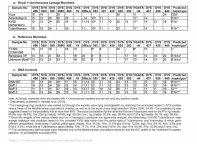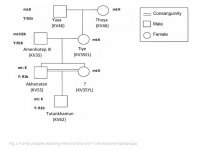Wow, what brought back this blast from the past?
The last I heard is that the screen shot could have been just a demo. Until the samples are tested by a few labs around the world we're just speculating.
If he was R1b I would think V-88 would be a much better bet, but who knows? I do, however, find it a bit suspicious that Hawass refused to release the results for Tut, but released the ones for Ramesses III.
If the Hyksos of the Fifteenth Dynasty did carry some forms of R1b, why isn't it possible that they sired some descendants who moved up the ranks and eventually emerged as Pharaohs in a later dynasty? That happened a lot in Egypt. Ramesses I, the founder of the great 19th dynasty, was just a military commander, actually born near the Hyksos capital, and rose to be Pharaoh. Who knows what ydna he carried? We can be sure, however, that all these people were probably autosomally Egyptian; just look at their sculptures.
https://en.wikipedia.org/wiki/Ramesses_I
Or, look at Somerled. Isn't the consensus that he was R1a? Yet he's the great "Celtic" hero against the Norse. The real world is messy and complicated in terms of genetics. People in the past didn't identify with their yDna. Well, most people today don't identify with it either.They identify with their culture. The Norse people could have been moving into the area for quite a while. People mate, and not always in the culturally permitted or "legal" ways. Things happen. Look at the mess in the English medieval royal lines. Lots of changes in yDna. Which is the "legitimate" one?
https://en.wikipedia.org/wiki/Somerled
Anyway, by the 20th dynasty Ramses III was ydna "E1a". Things change.
https://en.wikipedia.org/wiki/List_of_haplogroups_of_historic_people#Tutankhamun
According to IGenea he is M269+, so if I had to guess probably somewhere under L23 (L584 & L277) or even PF7562.



